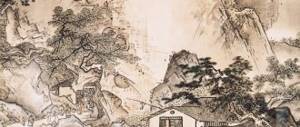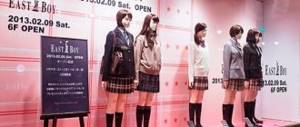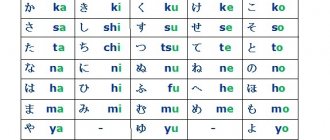- July 3, 2019
- Finance
- Tatiana Yagofarova
In recent years, it has been noted that Japan's economy has become more developed. This also helps to popularize the state among tourists. Those who are planning to visit the Land of the Rising Sun need to know everything about Japanese banknotes so as not to stumble upon a fake during their trip and not get into an unpleasant situation.
Story
As is known from the history of the creation of the yen, Chinese money was taken as a model. This happened because the states carried on trade relations for many centuries. The name of the Japanese banknote is even similar to the Chinese word “yuan”. Japanese banknotes were first introduced in 1877. During their existence, they were repeatedly depreciated; the government carried out monetary reforms in the late 19th and early 20th centuries. The last time new banknotes were issued was in 2004. then the so-called F series came out to replace the D and E series. For them, experts used the latest technologies with an improved degree of protection.
Exchange rates in Japan
The rate at which currency exchange is carried out in Japan is influenced by:
- events occurring in the Asia-Pacific region;
- dynamics of macroeconomic indicators of the Japanese economy;
- activities of the Japanese Central Bank.
Complete information about the functioning of the banking system of the Land of the Rising Sun can be obtained by reading the article “Banks and the banking system of Japan: principles of organization and features of work.”
It is allowed to import any currency into the territory of the island state and there are no restrictions on its quantity. But for an amount exceeding the equivalent of 1 million yen (9,420 US dollars), you need to fill out a customs declaration.
Today you can exchange rubles for yen at the rate of 1000 yen = 620.35 rubles.
Take a sociological survey!
[yop_poll id=10]
Where and what currency can be exchanged
A person who wants to exchange currency in Japan needs to know that the yen can be denoted by the symbol ¥ or a combination of the Latin letters JPY.
There are several ways to carry out the conversion.
The first is at the airport exchange office immediately upon arrival. The motivation for this option of acquiring yens is that you will have to travel from the airport to the city center by public transport or by taxi. And you will need to pay for such a trip in local currency. What’s interesting: even if a taxi service was used, the change must be taken in full. Tipping in the classical sense is not accepted in the Land of the Rising Sun. Another compelling argument in favor of exchanging currency at the airport is the most favorable exchange rate.
The second conversion option is at the hotel. But it is less convenient, since hotels in Japan have exchange rates - no more than $300 per person per day.
Thirdly, you can make the exchange at your nearest bank. The yen/ruble exchange rate in large financial institutions is close to optimal. One of the disadvantages of this approach is that tourists need to take into account the working hours of banks. They are open to visitors from 9:00 to 15:00.
Let us note one more point. In commercial establishments in Japan, change is always given from banknotes of any denomination. But the machines do not accept coins - these machines only accept 1,000 yen bills.
Therefore, in order not to encounter difficulties, when exchanging in banks, you need to pay attention to a sufficient number of banknotes of this particular denomination.
Coins
In addition to Japanese banknotes, metal coins are used in denominations of 1, 5, 10, 50, 100 and 500 yen. The simplest, but at the same time the most common coin is 1 yen. Aluminum was used for manufacturing. The obverse features a young tree, which is a symbol of new life. The year of manufacture, denomination of the coin and the name of the country are also indicated here.
5 yen are specially made from a stronger alloy of zinc and copper. On the front side, in addition to the year of manufacture and value of the coin, ears of rice are depicted.
The 10 yen is a stronger coin because it has a small amount of tin added to the zinc and copper. On the obverse is the world-famous Bedoin Temple, dedicated to Buddha. This structure has been recognized as a UNESCO World Heritage Site. Unlike other coins, in addition to the denomination, the reverse features an elegant laurel wreath.
For 50 and 100 yen, an alloy of copper and nickel was used - cupronickel. The similarities between the coins do not end there. They differ only in that on the front side of 100 yen you can see a sakura branch, and on the front side of 50 yen you can see a chrysanthemum. As with other coins, the value and year of issue are indicated on the reverse.
The most valuable coins are those in denominations of 500 Yen. They differ from each other by year of manufacture and different metal words. For example, in 1982 they were made from cupronickel, and in 2000 it was decided to cast coins from nickel, copper and zinc. They have the same appearance.
Images
Interestingly, Japan's paper money is unusual. Their main quality is their special composition; when wet and even after an “erroneous” wash, the banknotes do not lose their shape and quality. Also, interestingly, there is no portrait of the Emperor on them. From some banknotes, photographs of writers, public and cultural figures, and educators look back at us. The valuable paper strips contain images of historical scenes from the life of the people, architecture, paintings, animals and nature of this flourishing island. For example, on one of the banknotes there is the sacred Fuji and a beautiful sakura branch. Who exactly is depicted on paper banknotes?
- 1000 yen - portraits - Hideyo Noguchi, a 20th century Japanese microbiologist (pictured), as well as the writer Natsume Soseki. He can be called the founder of modern Japanese literature. The works of this author are known and translated into different languages.
- 5000 yen - the bills depict Nitobe Inazo, a fairly famous social activist who wrote the book “The Way of the Warrior.” Represented Japan in the West. And Ichiyo Higuchi - 19th century Japanese writer
- 10,000 yen - the image of Fukuzawa Yukichi, a famous educator in the country, was created (in the photo, and on the reverse side, an image of a Japanese green pheasant).
Japanese coins traditionally have a digital denomination on one side, but on the other side they are embossed with drawings of local plants. For example, rice, sakura, money tree.
How to recognize a fake
Banknotes issued after 2004 have reliable protection against counterfeiting. In order to avoid counterfeit banknotes from entering circulation, painstaking work has been done and various methods have been tried. Japan has a Money Museum that displays coins and banknotes that have been in circulation since the late 7th century. Using them you can track how the means of protecting the yen have changed. What watermarks look like became known already in the 17th century. The following types of protection are currently used in the production of Japanese yens:
- Fluorescent ink. If you shine ultraviolet rays on the front of a banknote, the surface will glow orange. Some fragments of the background pattern are highlighted with a greenish tint. This effect cannot be achieved through artisanal production.
- Hidden image. If you look at the 10,000 from a different angle, laying it on a straight surface, the denomination of the Japanese yen notes will become noticeable. When looking at the reverse side, the inscription NIPPON appears on the right at the right angle.
- Intaglio printing. Experts call this technology “intaglio”. It has been proven that it is the most effective measure of protection against the issuance of counterfeit money, for which a printer or scanner is used. The technology involves applying a relief image to a banknote. It is performed in a specific area. Intaglio printing also helps people with low vision to know the denomination of a banknote. The five-thousandth bill has an image in the shape of an octagon, the ten-thousandth - in the shape of the Latin letter “L”. The two thousandth is distinguished by relief circles, the thousandth by horizontal lines. The circles on the 2000 banknote represent the katakana sign “ni”. In decoding, this means the word “two”.
- Pearlescent ink. If you carefully examine the obverse of any banknote at a slight angle, then on the left and right you can see a barely noticeable translucent image that has a silvery-pink color.
- Water marks. This is one of the most reliable methods of protection known since ancient times. When an image is applied to paper against the light, various images that combine light and dark elements become visible, as in chiaroscuro. If this technique is used, the thickness of the paper changes slightly.
- Microprinting means that each bill will contain the name of the Bank of Japan in small print. The inscription NIPPON GINKO fits into the background grids, which are called micropatterns. It consists of thin lines intertwined with each other and is one of the design elements.
After the introduction of such reliable security technologies, it was found that the number of counterfeit Japanese yens was reduced several times. In the photo of banknotes, modern security measures are not visible, but they are quite effective, according to experts.
Historical moments
The history of the yen is very interesting. Basic information can be gleaned from the history of the country. Since the 7th century, Japanese coins have been made not only in the classic round shape. Ancient coins were even made in the form of an ingot, and sometimes of a completely incomprehensible shape. Until the mid-19th century, there were different types of coins and banknotes issued by different rulers and wealthy feudal lords. At one time, more than 200 different currencies were in operation in the country at the same time.
What kind of money appeared in Japan after such financial confusion? In 1869, yens began to be issued; two years later, all other local money was officially banned.
The first national money was produced and put into use in 1972. The bills were vertical, similar to banknotes that had been issued before. At first, the Japanese government printed paper money in Germany. The drawings on them were monotonous - dragons and peacocks. Many fakes have appeared. Then new banknotes were ordered from the Americans, but they turned out to be too similar to dollars. Since 19882, the Japanese established their own banks and from that moment on issued their own financial units. The first were bills ranging from 1 to 100 yen. All had images of military leaders and politicians of that time.
During all the wars in which Japan was a participant, it issued occupation money. Special banknotes with Russian inscriptions were produced for the Far East.
Rare money
There are several types of Japanese banknotes that are dedicated to some memorable event. This money is more valuable compared to banknotes and coins intended for everyday use. These include the following types:
- 1986 10,000 Yen silver coin. Despite the fact that the circulation exceeded 10 million pieces upon release, it is a very rare specimen. The release was timed to coincide with the 60th anniversary of the reign of Emperor Hirohito.
- A silver 1000 yen coin issued in 2000. This year marked the 50th anniversary of the launch of the first Shinkansen train in Japan.
- Silver coin of 2003 with a face value of 1000. This year celebrated the annexation of the Amami Islands to Japan. It has a small circulation - about 50,000 pieces.
These coins can only be seen in the collections of numismatists or in government museums, as they are part of national history. 2000 Japanese yen are also valued. Banknotes in circulation are now difficult to find, they are almost out of circulation.
History of monetary circulation in Japan
Today everyone knows that the national Japanese currency is called the yen. However, the state did not immediately come to a unified monetary unit.
In the Middle Ages, more than 1,500 different coins circulated on the archipelago, which were made of silver or gold. Such diversity could not be maintained for long. The establishment of autocracy in most of the country made it possible to overcome it.
In 1868, currency reform was carried out in Japan. Its result was the emergence of the yen. The monetary system became strictly decimal:
- the yen consisted of 100 sen;
- A sen was equal to 10 rins.
These monetary units were in circulation until 1954. The yen appreciated steadily until the mid-1980s.
The result was deflation, causing significant increases in US dollar prices. And in 1991, several financial institutions went bankrupt.
The exchange rate of the Japanese currency fell in the early 90s, but the country's authorities managed to correct the situation and the position of the yen strengthened. Even the earthquake that occurred in 2021, which caused a tsunami, did not cause its fall.
Centralized monetary policy
Japan's centralized monetary policy developed against the backdrop of the feudal-military rule of the Tokugawa shogunate in the 17th century. The first of the shoguns, Ieyasu, issued 5 types of coins from silver and gold. Keite, as the money of this coinage was called in Japan, became the main element of financial circulation until the second half of the 19th century. The Tokugawa took strict control over all reserves and deposits of metal in the state and organized mints in different regions. Copper coins were issued by merchants in agreement with the authorities. All circulating denominations were exchanged at a freely floating rate that did not have a rigid peg.
The government’s efforts were not in vain: the exchange rate stabilized significantly by the end of the 17th century, which significantly affected the country’s economy.
It is also worth adding that at the turn of the 16th – 17th centuries, the first paper money appeared in the Yamada province, which was called “Yamada hagaki”. They were issued under the control of the priests of the ancient temple in Ise and were intended to act as a guarantee of the value of coins as a result of their wear, as well as to save merchants from the inconvenience of carrying heavy metal.
Japan banknotes
The banknote series of modern Japan consists of four denominations of banknotes belonging to two series - D 2000 (2000 yen) and E 2004 (all others).
On the front side of the junior denomination of the 1000 yen line (150x76 mm) is printed a portrait of Hideyo Noguchi, who has achieved success in the field of microbiology. The future scientist was born in 1876 in Fukushima Prefecture. For his research in the field of bacteriology, he was awarded the Imperial Prize of the Japanese Academy of Sciences (1915). It can be said that Hideyo Noguchi died in combat, since his death was caused by yellow fever while the scientist was in Africa on a scientific mission. The other side of the bill is dedicated to the sacred mountain for the Japanese - Fuji. The volcano itself is depicted in the distance, and in front of it lies Lake Motosu. The foreground is occupied by cherry blossoms.
The only representative of the D series , the 2000 yen bill (154×76 mm) does not have portraits. However, it could not do without images of people, since its circulation is occupied by an illustration for “The Tale of the Brilliant Prince Genji,” which is included in the list of literary classics of Japan (11th century). The right side of the front side shows us the ceremonial gate Shureimon of Shuri Castle, from where the lords of the Ryukyu state ruled, whose territory occupied the islands of the same name and Okinawa. On these banknotes, Japan was the first to use the Eurion constellation (a pattern of five rings randomly scattered as design details) to protect against counterfeiting. 2000 yen is a dying denomination, banknotes of which are rarely seen in circulation. This denomination is most popular in Okinawa Prefecture.
The obverse of the 5,000 yen banknote (156x76 mm) features a portrait of Ichiyo Higuchi. Despite her short life (24 years), she managed to become one of the classics of Japanese literature. Having studied Japanese poetry at a private school, Ichiyo Higuchi began to compose novels and stories about the destinies of ordinary residents of the country. Her greatest fame came from her works “Life in the Wilderness” (1892), “The Thirteenth Night” (1895) and “Muddy Current” (1895). The latter was filmed. The reverse side is given to painting - a fragment of the famous painting “Irises”, created by the artist Ogata Korin.
The highest denomination of the line is still 10,000 yen (160×76 mm). On its obverse is a portrait of Fukuzawa Yukichi, a philosopher, educator, writer and translator. His works largely influenced the formation of the Japanese government during the Meiji era. The bird on the back is the legendary phoenix, as it is depicted on the roof of the Byodo-in Buddhist temple in the city of Uji.
Private coinage and counterfeit coins
Over the next few centuries, the history of money in Japan did not develop significantly. Since domestic minting was not carried out, Chinese and Korean coins (mon) were in circulation, as well as the currency of the Ryukyu state. Along with them, counterfeit money was also in circulation in considerable quantities.
In the 14th century, Japanese princes began to issue their own money. The most famous were the Kosyukin coins from the gold-bearing province of Kai, which were distinguished by their high quality of coinage. Such money had no face value and was valued by weight. They were made of precious metal and were especially in demand for large trade transactions.
By the 16th century, the Japanese state had not only reached the height of private coinage, but this period was also marked by the skillful production of counterfeit coins. Despite severe penalties, many residents were successfully involved in the production of counterfeit money with Chinese and Japanese symbols.











